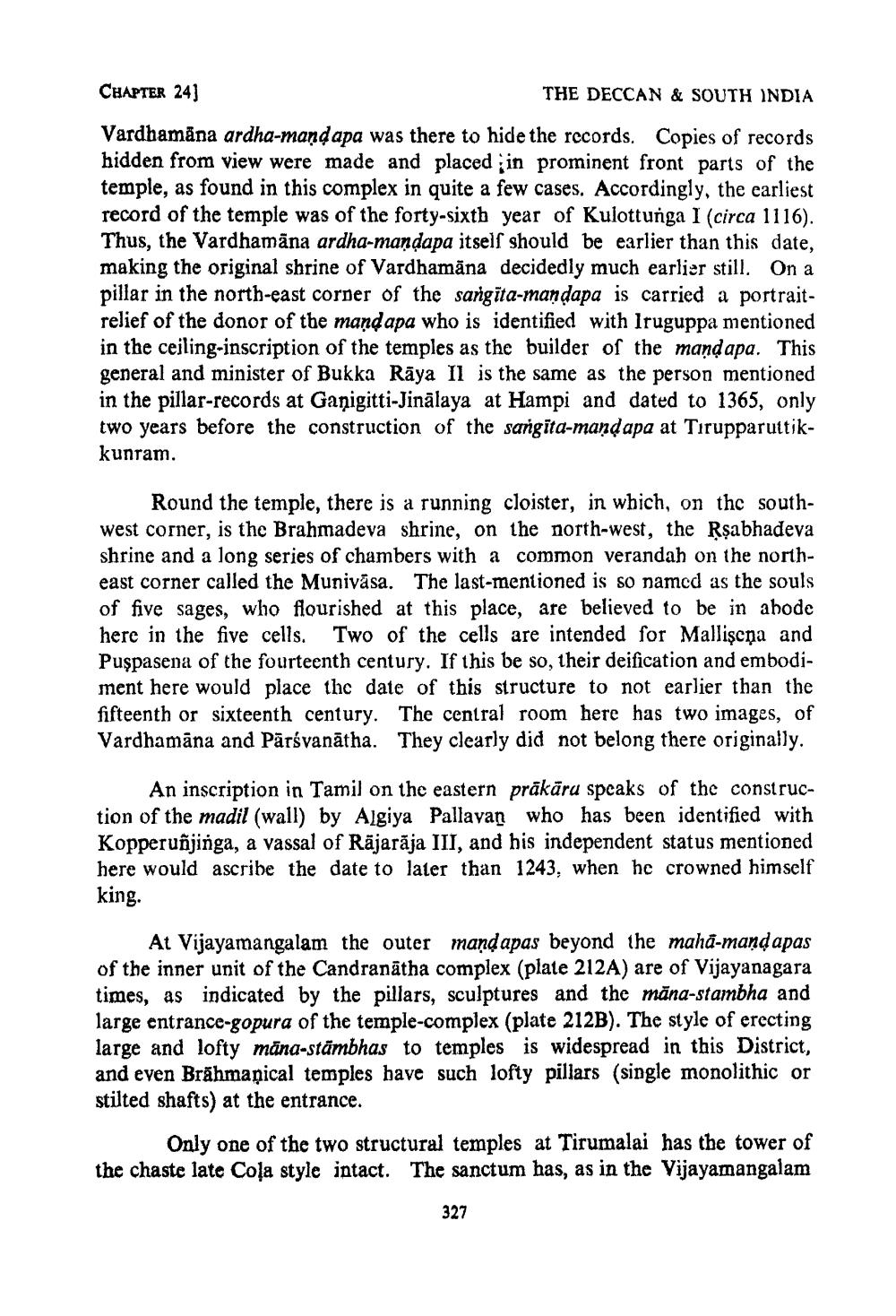________________
CHAPTER 24)
THE DECCAN & SOUTH INDIA
Vardhamana ardha-mand apa was there to hide the records. Copies of records hidden from view were made and placed in prominent front parts of the temple, as found in this complex in quite a few cases. Accordingly, the earliest record of the temple was of the forty-sixth year of Kulottunga I (circa 1116). Thus, the Vardhamāna ardha-mandapa itself should be earlier than this date, making the original shrine of Vardhamāna decidedly much earlier still. On a pillar in the north-east corner of the sangita-mandapa is carried a portraitrelief of the donor of the mand apa who is identified with lruguppa mentioned in the ceiling-inscription of the temples as the builder of the mand apa. This general and minister of Bukka Rāya Il is the same as the person mentioned in the pillar-records at Ganigitti-Jinālaya at Hampi and dated to 1365, only two years before the construction of the sangita-mand apa at Tirupparuttikkuntam.
Round the temple, there is a running cloister, in which, on the southwest corner, is the Brahmadeva shrine, on the north-west, the Rşabhadeva shrine and a long series of chambers with a common verandah on the northeast corner called the Munivāsa. The last-mentioned is so named as the souls of five sages, who flourished at this place, are believed to be in abode here in the five cells. Two of the cells are intended for Mallişcņa and Puşpasena of the fourteenth century. If this be so, their deification and embodiment here would place the date of this structure to not earlier than the fifteenth or sixteenth century. The central room here has two images, of Vardhamana and Pārsvanātha. They clearly did not belong there originally.
An inscription in Tamil on the eastern präkāru speaks of the construction of the madil (wall) by Algiya Pallavan who has been identified with Kopperuñjinga, a vassal of Räjarāja III, and his independent status mentioned here would ascribe the date to later than 1243, when he crowned himself king.
At Vijayamangalam the outer mandapas beyond the maha-mandapas of the inner unit of the Candranātha complex (plate 212A) are of Vijayanagara times, as indicated by the pillars, sculptures and the māna-stambha and large entrance-gopura of the temple-complex (plate 212B). The style of erecting large and lofty māna-stämbhas to temples is widespread in this District, and even Brāhmanical temples have such lofty pillars (single monolithic or stilted shafts) at the entrance.
Only one of the two structural temples at Tirumalai has the tower of the chaste late Cola style intact. The sanctum has, as in the Vijayamangalam
327




